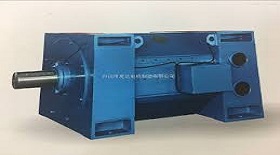The excitation modes of stator magnetic pole
The excitation winding of the series excited dc motor is connected with the rotor winding through brush and commutator, and the excitation current is proportional to the armature current. The magnetic flux of the stator increases with the increase of the excitation current. The torque is approximately proportional to the square of the armature current, and the speed decreases rapidly with the increase of the torque or current. The starting torque can reach more than 5 times of the rated torque. The short-time overload torque can reach more than 4 times of the rated torque. The speed variation rate is large, and the no-load speed is very high (generally it is not allowed to operate under no-load). The speed adjustment can be achieved by connecting the external resistor in series (or parallel) with the series winding or by connecting the series winding in parallel.
The excitation winding of SHC motor is parallel with rotor winding, and its excitation current is relatively constant. The starting torque is proportional to the armature current, and the starting current is about 2.5 times of the rated current. The speed decreases slightly with the increase of current and torque, and the short-time overload torque is 1.5 times of the rated torque. The speed change rate is small about 5%~15%. The speed can be adjusted by the constant power of the weak magnetic field.
The excitation winding of other dc motor is supplied by an independent excitation source. The excitation current is also constant, and the starting torque is proportional to the armature current. The speed change is also 5%~15%. The rotational speed can be increased by eliminating the constant power of the magnetic field or decreased by decreasing the voltage of the rotor winding.
In addition to the shunt winding on the stator magnetic pole of the compound dc motor, the series winding is also installed with the rotor winding (the number of turns is less). The flux direction of the series winding is the same as that of the main winding. The starting torque is about 4 times of the rated torque, and the short-time overload torque is about 3.5 times of the rated torque. Speed variation is 25%~30% (related to series winding). The rotation speed can be adjusted by reducing the intensity of the magnetic field.



